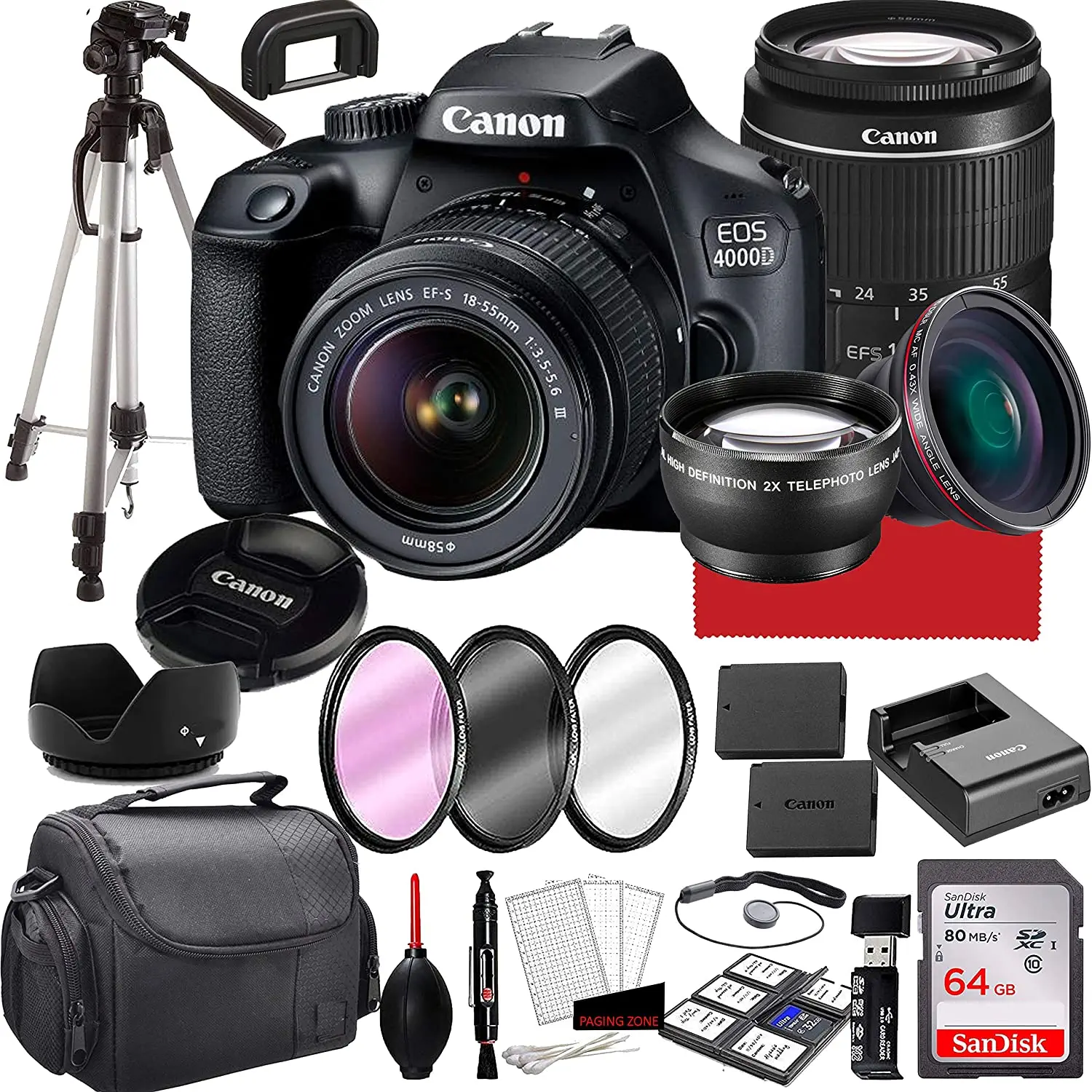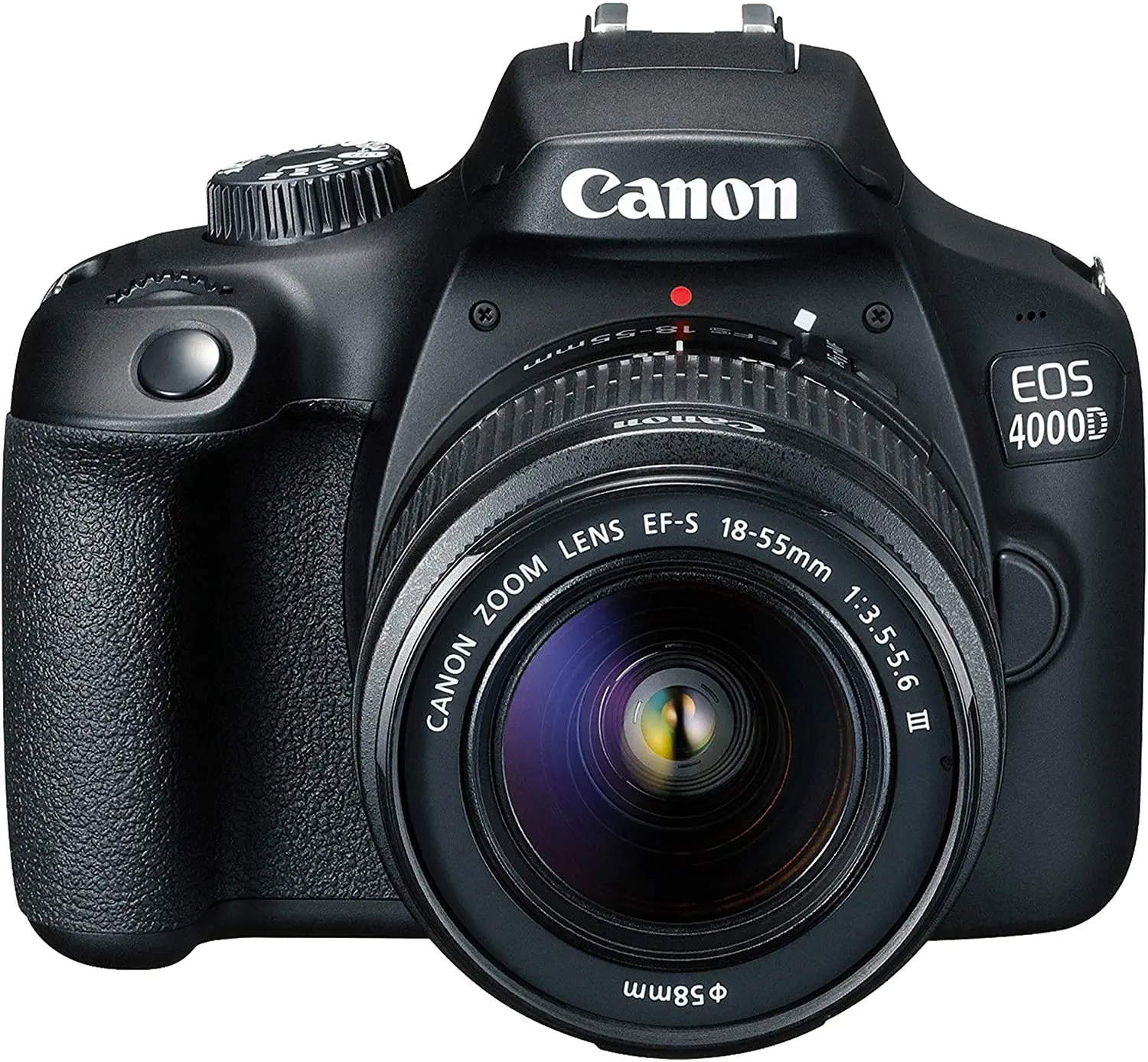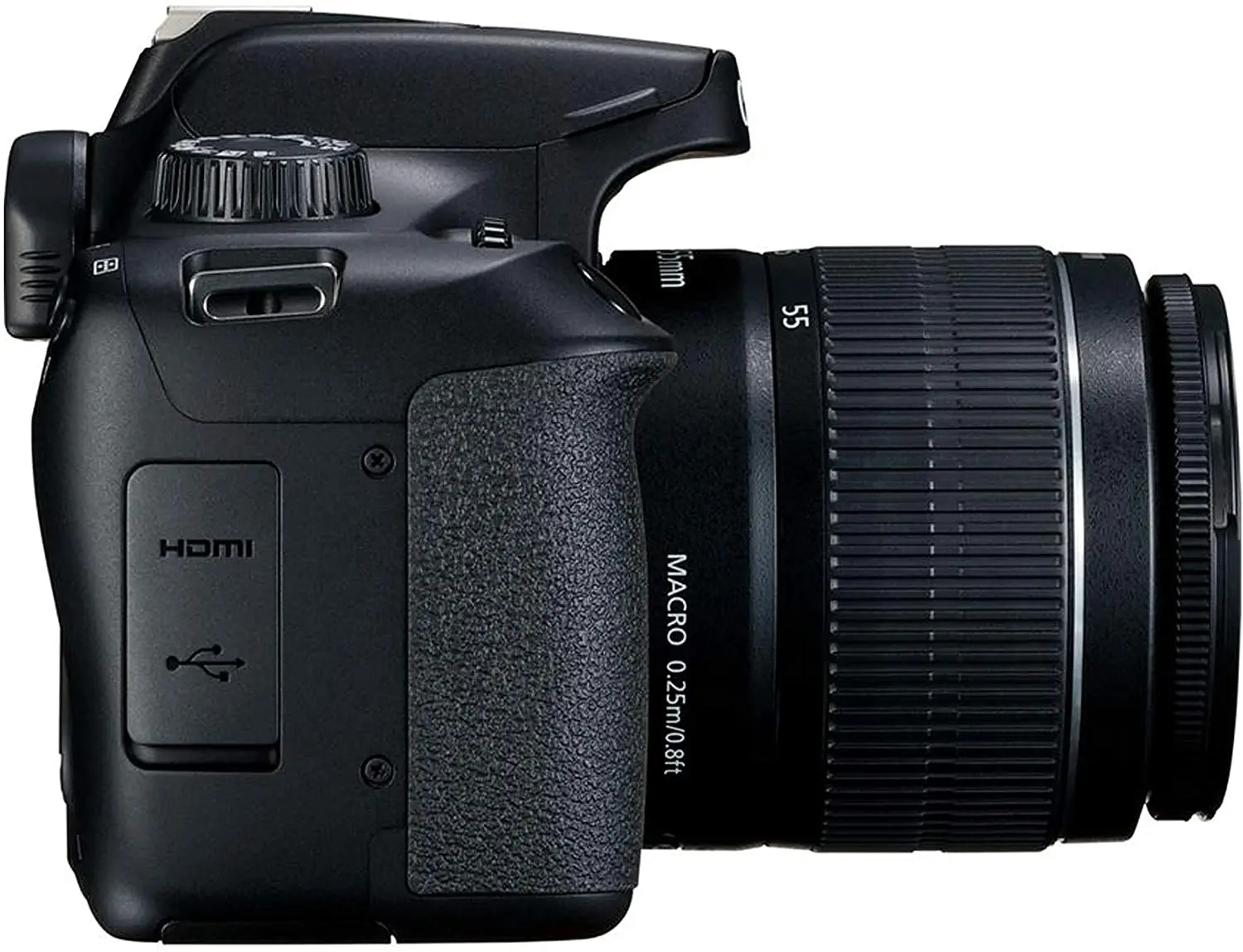The Powerful Canon EOS 4000D DSLR Is a Must Have
Prices pulled from the Amazon Product Advertising API on:
Product prices and availability are accurate as of the date/time indicated and are subject to change. Any price and availability information displayed on [relevant Amazon Site(s), as applicable] at the time of purchase will apply to the purchase of this product.
- Canon EOS 4000D DSLR Camera(International Version)- 18.0MP APS-C CMOS Sensor,DIGIC 4+ Image Processor, 6.8 cm (2.7″) TFT LCD, approx. 230 K dots, Full HD 1080p Video Recording at 29.97 fps ,9 Point Auto Focus,Dual,Up to 3 fps Shooting and ISO 12800, Scene Intelligent Auto, Instantly transfer photos and movies to your smart device, for easy sharing on social media or cloud backup, and shoot remotely with Wi-Fi and the Canon Connect app,1 Year Limited Seller Supplied Warranty
- Canon EF-S 18-55mm F/3.5-5.6 DC III Zoom Lens – EF-S-Mount Lens/APS-C Format, 28.8-88mm (35mm Equivalent) ,Aperture Range: f/3.5 to f/38 ,One Aspherical Element ,Super Spectra Coating ,Micro Motor AF System , Rounded 6-Blade Diaphragm
- SanDisk 64GB Ultra UHS-I SDHC Memory Card (Class 10) – 64GB Storage Capacity , Class 10 / UHS-I , Max. Read Speed: 80 MB/s , Min. Write Speed: 10 MB/s , Water/Temperature/X-Ray/Shockproof ,Built-In Write Protect Switch + USB 2.0 Memory Card Reader
- 58MM 0.43x Professional HD Wide Angle Lens (w/Macro Portion)- Easily screws on to the front of your lens, and instantly expands the field of view for breathtaking wide-angle photography, 58MM 2.2x Telephoto Conversion Lens- Easily screws on to the front of your lens offers a much narrower angle of view. brings you twice as close to the action, 58mm 3pc Filter Kit w/ Ultraviolet protective filter [UV], Circular Polarizer filter [CPL], Fluorescent filter [FLD], 58mm Tulip Hood
- Camera Gadget Bag , 50 inch Tripod, High Capacity Spare Battery, Lens Cleaning Brush Pen, Lens Cleaning dust Blower, DSLR Camera 5pc Starter Kit- Lens Cap Keeper, Paging Zone Lens Cleaning Cloth, Screen Protectors, Memory Card Wallet

s the most basic DSLR in Canon’s EOS line-up, aimed directly at consumers who want a DSLR but are on a tight budget. You can still get the older 1300D for a lesser price, but it’s unclear how long Canon will keep it in the lineup. After some time on the market, the 4000D’s price may fall below the 1300D.
It has all of the basic features you’d expect from a DSLR (large APS-C sensor, optical viewfinder, manual control, and so on), but it also has a low-grade screen, a plastic lens mount, and a lack of features that are usually standard on other models (such as touch functionality, 4K video recording, and even a dedicated on/off switch).
The 4000D is designed to hook in those first-time buyers who don’t have a lot of cash to splash but are still keen to explore the world of DSLR photography. As such, the design and features are about as basic you can get. To begin with, the 4000D’s build quality is clearly on the low end of the scale. The dials and buttons, particularly the mode dial, are one of the more evident ways that construction quality has been kept down. While most Canon DSLR mode dials contain an on/off button, there isn’t one here, so you’ll have to rotate the mode dial from the “off” position into any shooting mode you wish to use. It can be tedious to have to pick your shooting mode every time you want to use the camera, and it can also lead to selecting the incorrect shooting mode if you rotate the dial too rapidly. Even so, every little bit helps when it comes to cost-cutting.

All of the buttons on the back of the camera are recognizable to Canon users, however instead of having their purposes printed directly on the button, labels are printed on the camera’s body. This implies that Canon will be able to use generic buttons in this area, lowering costs even more. The buttons are arranged in a logical manner across the camera, providing immediate access to features like as ISO, drive mode, white balance, and so on. Pop the 4000D’s kit lens off and you’ll notice that the lens mount is plastic – again it’s a cost saving exercise, one which is unlikely to affect you on a day to day basis, but is likely to be less durable than a metal equivalent in the long run (how often you’ll be changing the lens of a 4000D is up for debate, but it’s likely Canon expects you to stick with the kit lens for the majority of your shots.)
Canon launched the 4000D at the same time as the 2000D, putting aside all build-quality elements, the main point of difference is the sensor. The 2000D uses a higher-resolution 24.1 megapixel device, while the 4000D sticks with an 18-megapixel sensor, such as that found in the 1300D. 18 megapixels is more than enough for most uses, however, so don’t get too hung up on that
Like the 2000D, the 4000D uses a Digic 4+ processor. This is a few generations old now – no surprises to see it being used on Canon’s entriest of entry-level models – but it does everything you expect and need from a basic DSLR. In other words, don’t expect super-fast frame rates or lightning quick operation speeds, and you’re golden. Another similarity with the 2000D is the same 9-point AF system. Again, this is one of Canon’s older AF systems which gets the job done, but doesn’t exactly sparkle compared to newer systems, including Canon’s own excellent dual-pixel CMOS AF.Rounding out the spec sheet is Full HD video (same as the 2000D), and inbuilt Wi-Fi (the 2000D gives you NFC as well).

Canon’s 9-point AF system is starting to show its age now, but if this is your very first DSLR then it’s enough to get you started with. All of the AF points are clustered around the center of the frame, so be prepared to focus and recompose if your subject is lying on the perimeters.
Only the center of the 9-points is the more sensitive cross-type, so you’ll likely find that this is the one that comes into play most often, especially if you’re shooting in lower light conditions. The other focus points do a good enough job of locking onto subjects in good lighting conditions, though.
A live View is an option with the 4000D, but owing to the poor screen and very slow focusing, it’s not something we’d recommend for the majority of your shots. It can be helpful when photographing from a tripod, for macro and/or landscape-type subjects, but on the whole, you’re going to want to stick with shooting through the viewfinder.

